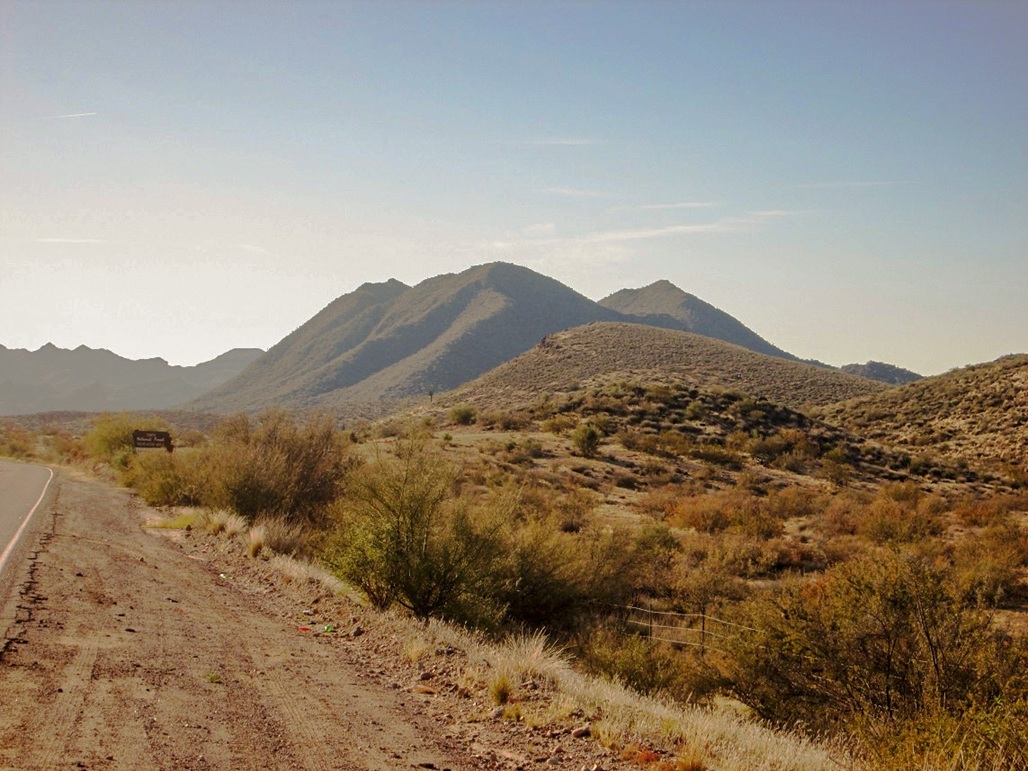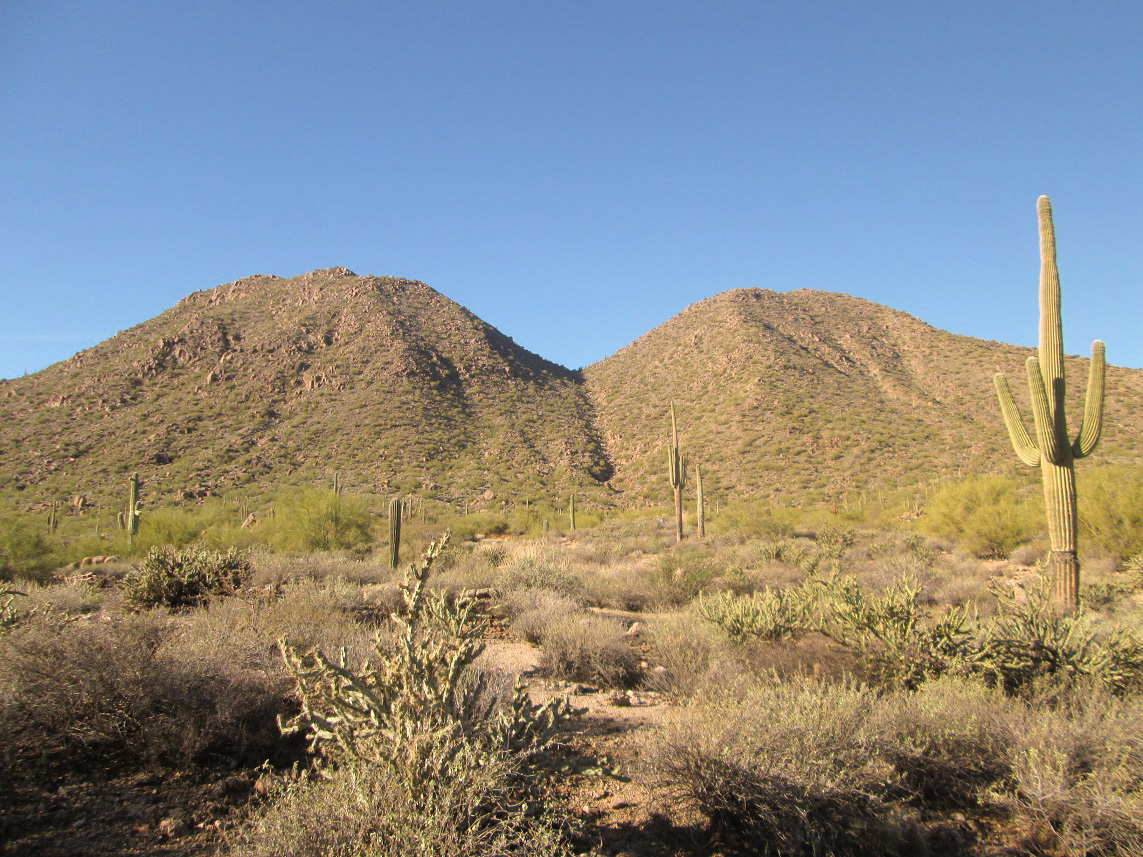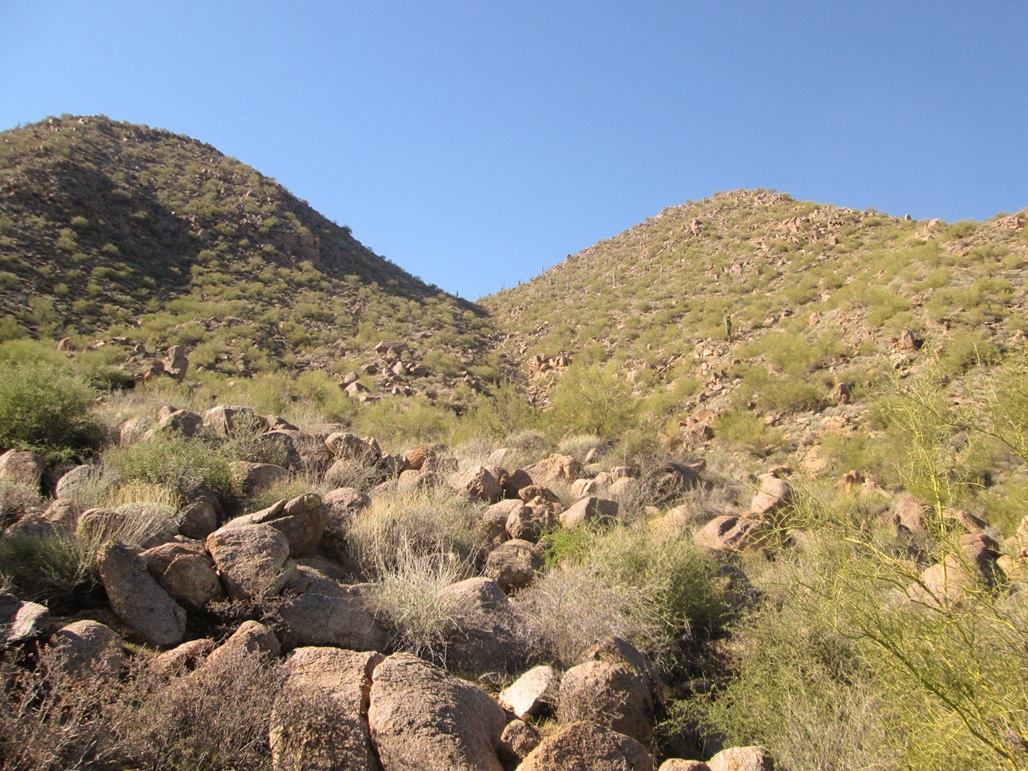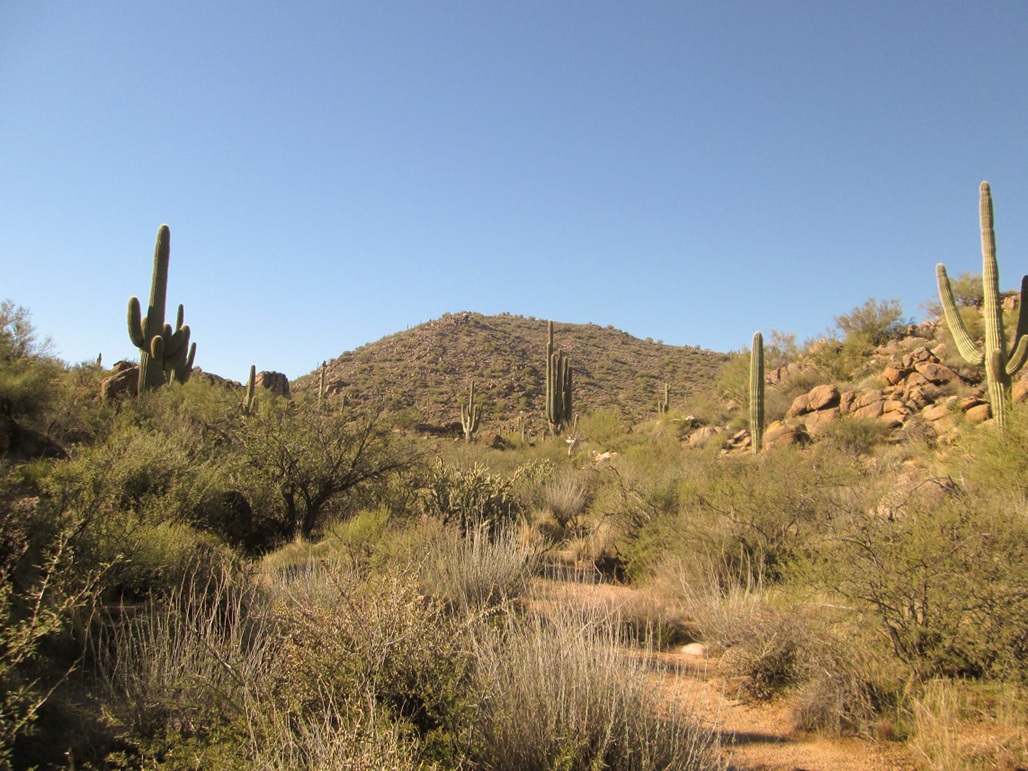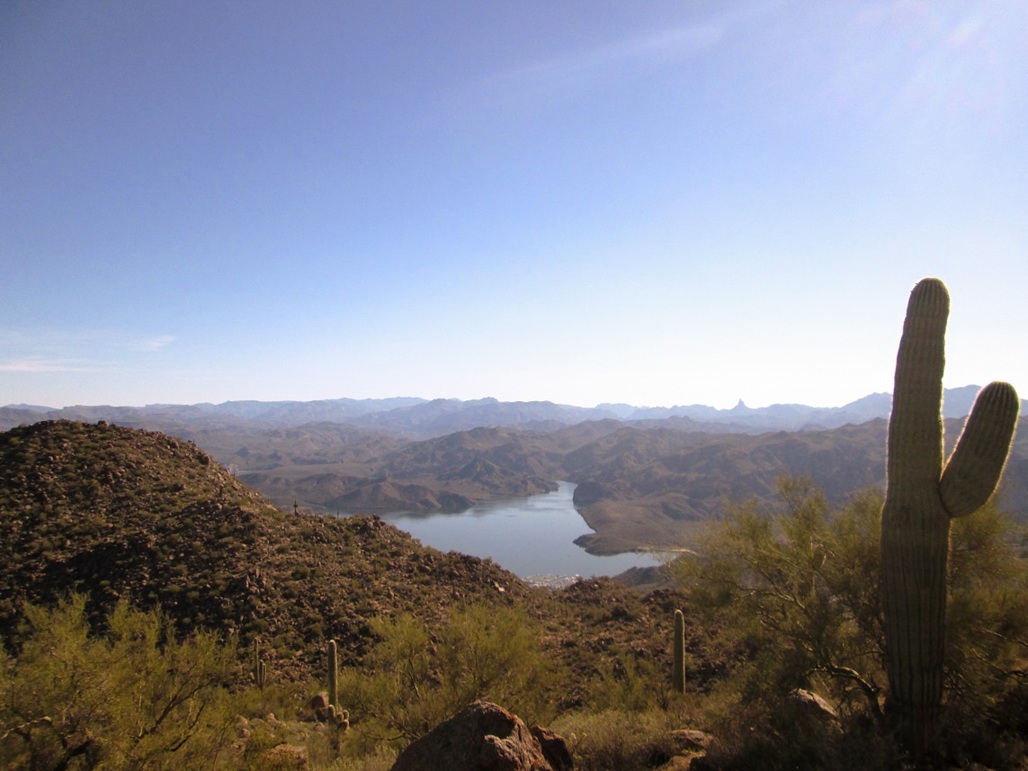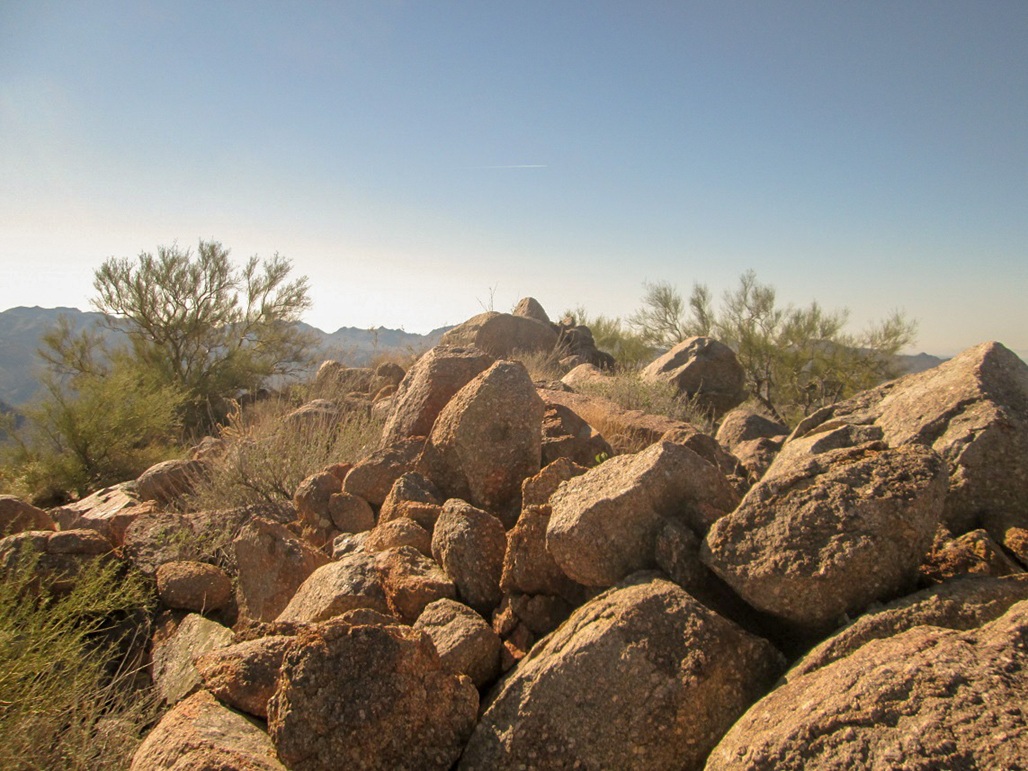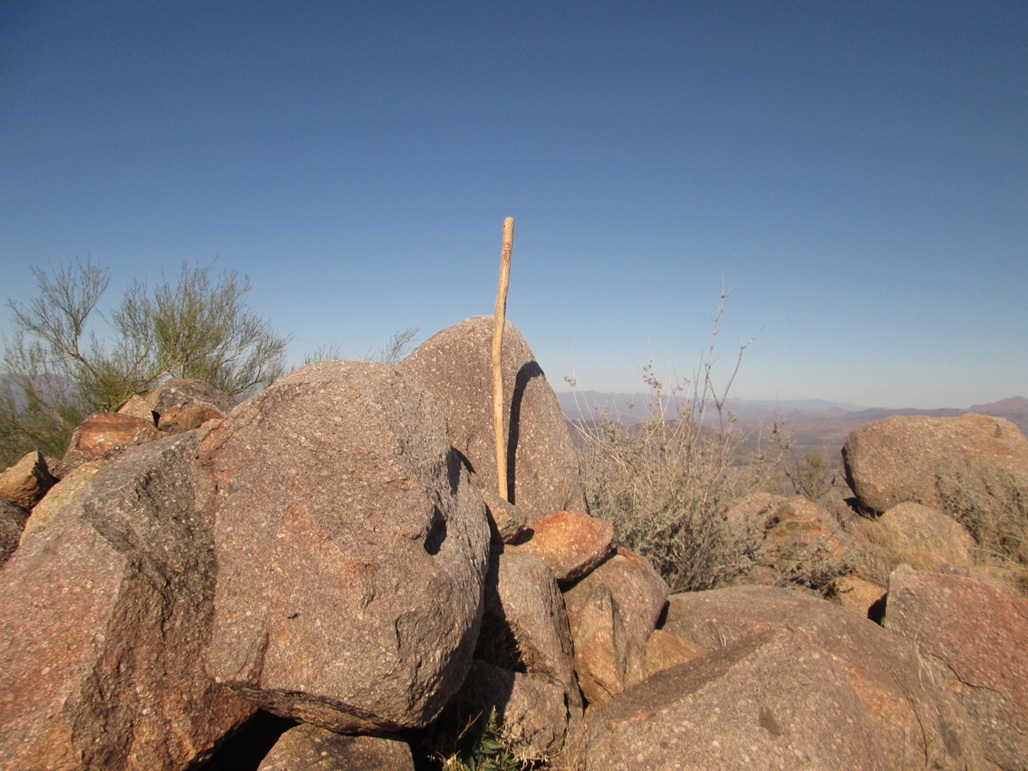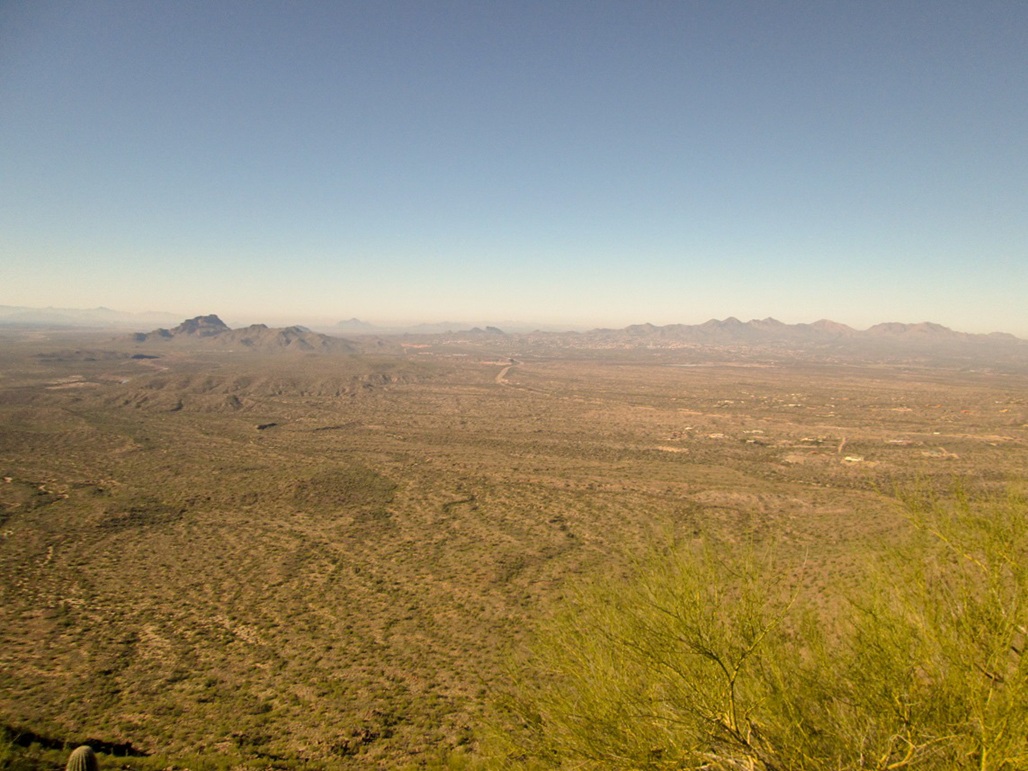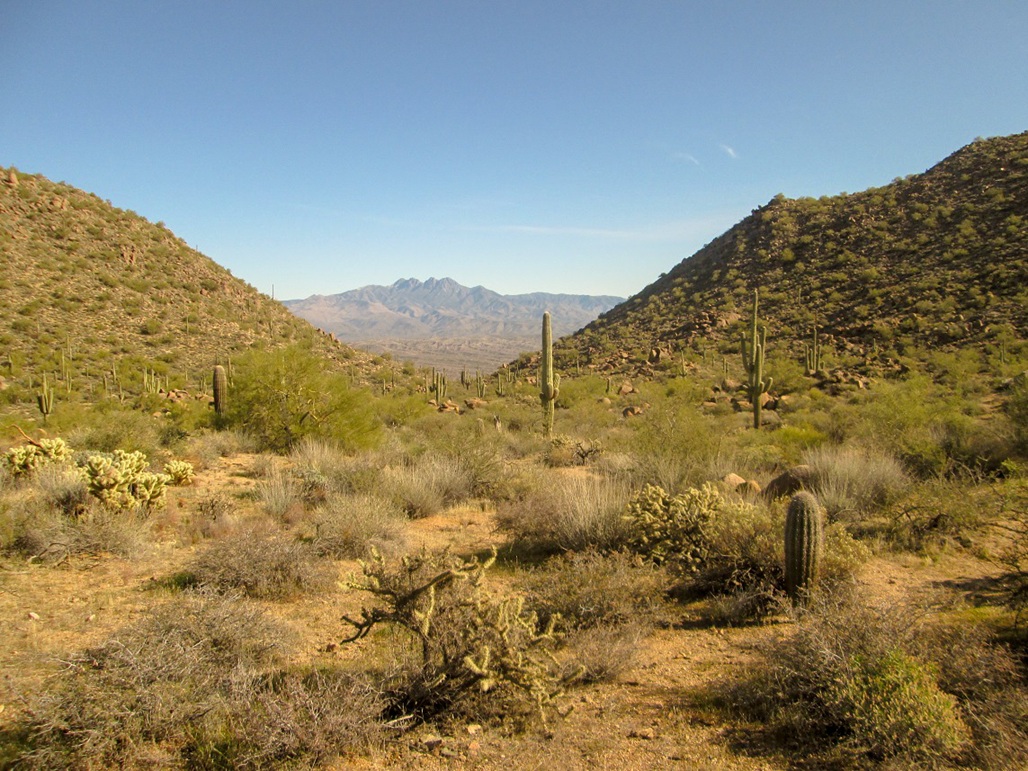
The Mountains of Arizona
• www.surgent.net
|
| Stewart Mountain |
• Saguaro Lake Area • Tonto National Forest • Maricopa County |
|
Date: December 17, 2015
• Elevation: 2,988 feet (2,982 feet per LIDAR)
• Prominence: 1,010 feet (per LIDAR)
• Distance: 2 miles
• Time: 2 hours and 20 minutes
• Gain: 1,150 feet
• Conditions: Clear and cold
Stewart Mountain is a lone peak located west of Saguaro Lake, about fifteen miles northeast of Mesa. Saguaro Lake is the west-most of a series of lakes created by dams along the Salt River. It is the most popular boating locale nearest Phoenix.
The peak itself consists of three summit humps, the western one being highest. There is no trail nor development on the mountain, but the hike is short and fairly easy. Nevertheless, it probably doesn't see more than a handful of visitors in a typical year.
I had a morning open and wanted to visit this peak. The drive was short, covering about 25 miles. I followed Shea Boulevard east through Fountain Hills, then the Beeline Highway (AZ-87) north about a dozen miles to the Bush Highway exit. The peak was visible from highpoints along the roads as far back as on Shea Boulevard.
I had no option but to park in a pullout along the road, which I don't like doing since it leaves my vehicle unattended and in plain sight while I am gone. I drove up and down Bush Highway looking for places that looked more "secure". I finally chose a dirt area near the intersection with the Butcher Jones Recreation Area Road. It had the advantage of being directly east of the peak. I locked up everything and started hiking at 9:30 a.m., the day clear, but cold, the air temperature about 45 degrees.
I hiked up the embankment on the other side of the road and walked through the brush, catching an older track that sped up my travel. After ten minutes, I was near the base of the rocky gully that separates the two easternmost bumps of the mountain. I would ascend this gully.
I stayed high at first, on the gully's left as I looked up. The rocks grew progressively larger and more jumbled, and I was forced into the gully. I made good progress, moving quickly. A few times I would run up a dead end where the rocks were too big to surmount, but finding a secondary route was always possible. After about thirty minutes, I had ascended to the top of this gully, where I could now see Stewart Mountain's summit ahead.
I then followed open routes through the vegetation, hiking across a flat bowl ringed by the three main hills that comprise Stewart Mountain. I hiked on a direct bearing toward the slopes below the summit. The slopes laid back nicely, and I encountered very few impediments other than heavy brush in spots, or cholla. I angled left to a saddle, then turned right and was on the summit a little over an hour after starting. The one-way hike covered a little over a mile and about 1,150 feet of gain.
I spent about ten minutes up top. The day was lovely, and there was no breeze, so although it was chilly, it was very pleasant. I had great views of the surrounding mountains and of Saguaro Lake. I could make out the Superstition Mountains and Weaverís Needle, The Four Peaks, Mount Ord, and looking west, the McDowell Mountains and the bumps farther west into Phoenix.
The summit is marked as 2,968 feet on the topographical maps, and the peak immediately to the east is marked as 2,961 feet, but I was most definitely higher than seven feet than the eastern peak. The difference was more like thirty feet. Online sites list the peakís elevation as 2,988 feet, and older references give elevations about 2,990+ feet.
The hike down went fast. The gully went fast as I could see routes easier, plus use gravity to scoot down rock faces that I otherwise would not have ascended. I stepped on one big rock and it teetered under me. I was able to correct my fall immediately, but it gave me a fright. Soon, I was out of the gully, back onto the desert flats, and quickly back to the road, where my truck sat, unmolested. The round trip took me two hours, twenty minutes.
I spent a few minutes relaxing, then drove out, taking the scenic route along the Salt River and up Usery Pass Road back into Mesa, where I caught the freeway home.
Stewart Mountainís prominence is often listed between 968 feet and 1008 feet, going by the mapís elevation of 2,968 feet (with 40-foot contours). If the 2,988-foot figure is assumed, the prominence range bumps up to 988 feet and 1028 feet. I admit I did not look for the benchmark while up there. The highest rocks jut about five feet above the dirt, so the prominence range could be higher.
I asked Andy Martin about this and it turns out that ten years ago, he and Mark Nicholls explored this issue, referring to older maps and benchmark information, plus some GPS readings, to conclude that with almost certainly that the peak has at least 1,000 feet of prominence (update: this is confirmed via LIDAR data). Apparently the 2,968-foot figure on the maps is an error. I can certainly attest that I was higher, when comparing to the eastern bump.
I should mention that Bush Highway is usually choked with vehicles pulling boats, even during winter. Of course, it's busier here in Summer, but at that time, hiking the peak would not be advised. During my visit, the road had steady traffic, but never too heavy. My concern was that given the traffic and the unsavory element that are drawn to boats and places to drink beer, my truck might be prone to a break-in. After the fact, I felt that a better place to park would have been in some pullouts along the Butcher Jones road, which would add a small amount of distance but leave me hidden from the main road.
Also, the area is a Fee area. I suspect this pertains to the boaters. I didnít have a pass, and was not ticketed. But it probably pertains to everyone. Maybe I got lucky.
|
|
